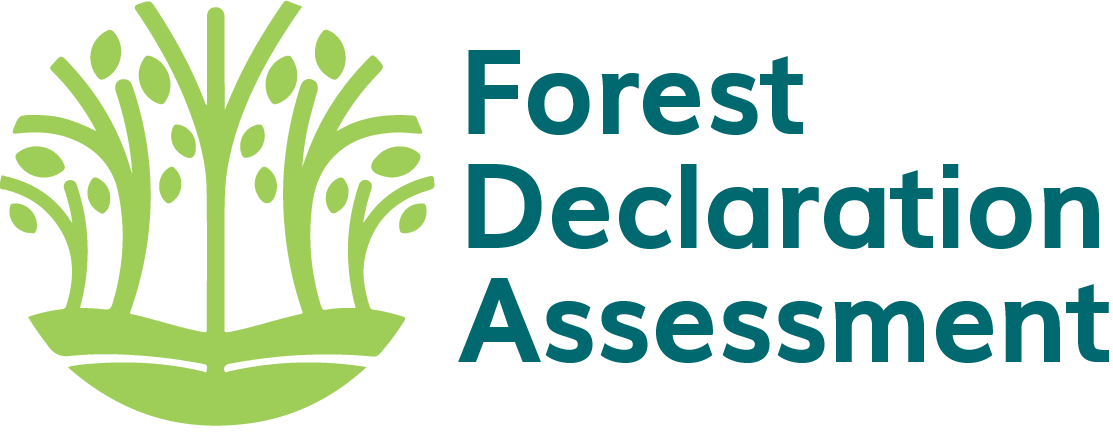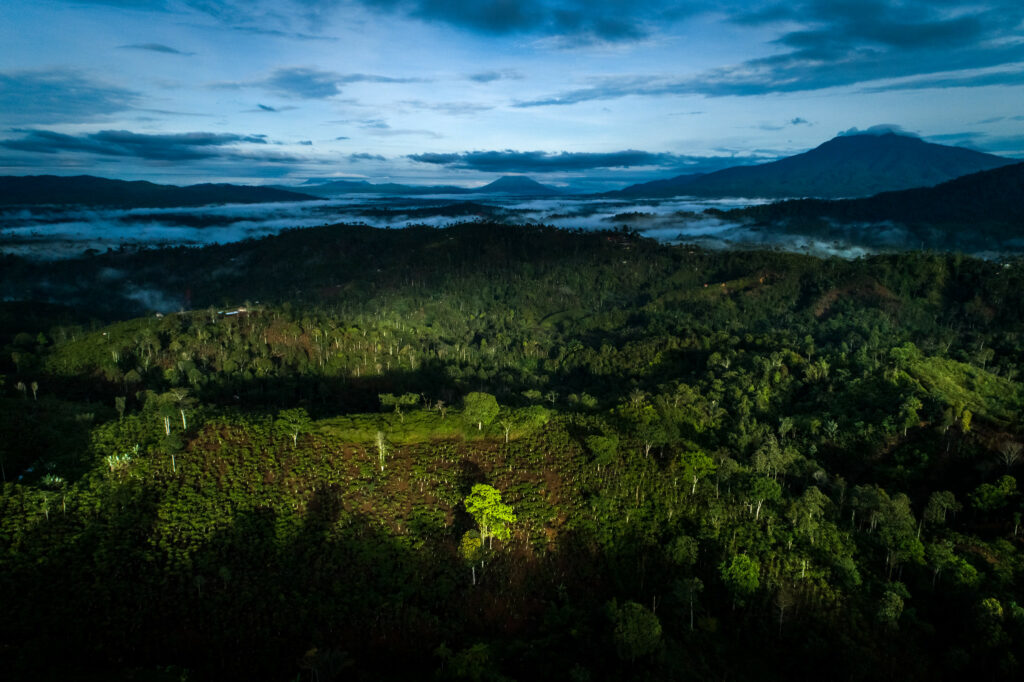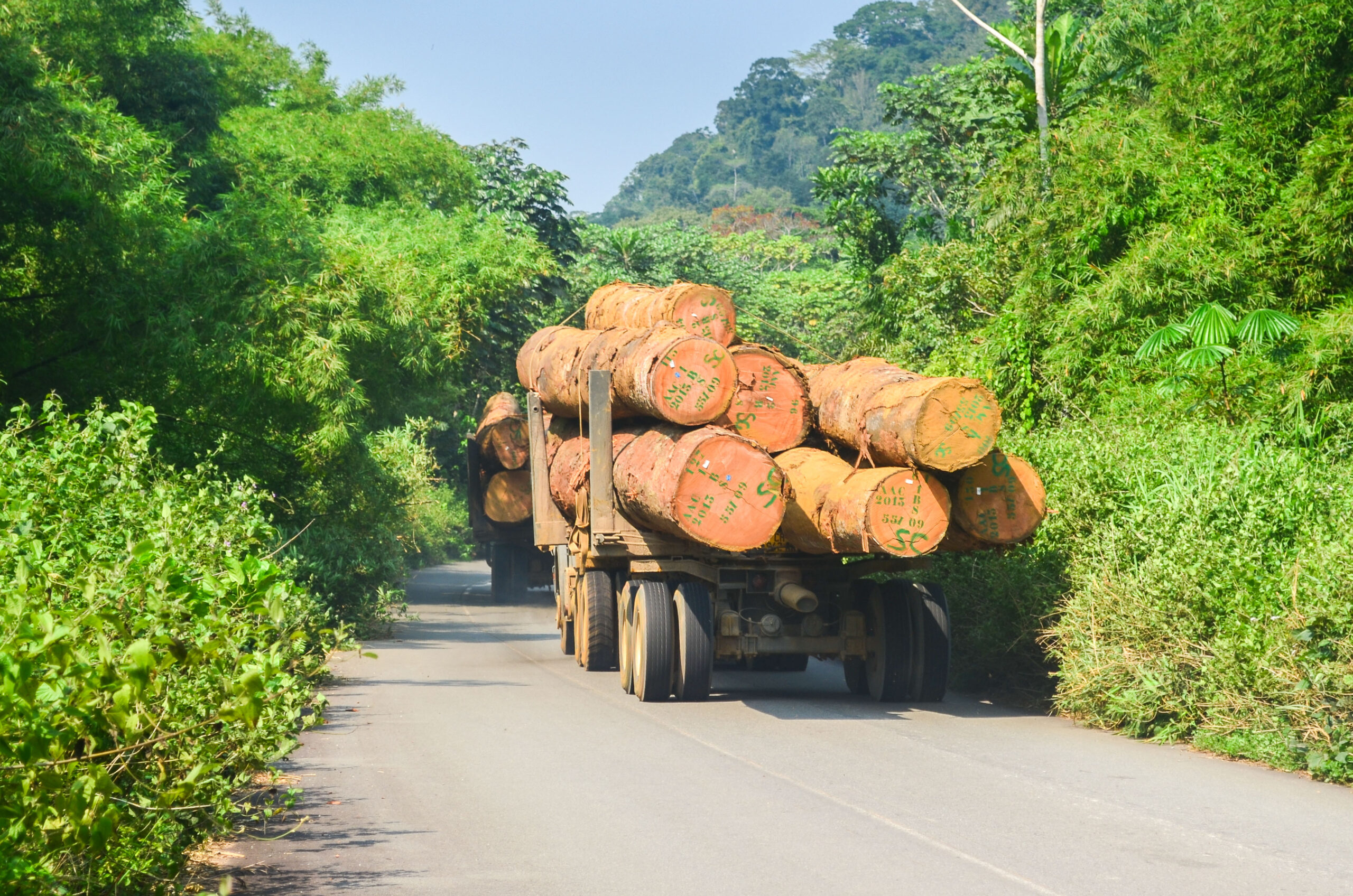WASHINGTON, DC/LONDON (24 October 2023)—A new study by a coalition of civil society and research organizations assessing progress toward pledges by countries, companies and investors to eliminate deforestation and restore 350 million hectares of degraded land by 2030 reveals that in 2022, global progress on protecting and restoring forests moved too slowly and, in some cases, worsened.
“The world’s forests are in crisis. All these promises have been made to halt deforestation, to fund forest protection. But the opportunity to make progress is passing us by year after year,” said Erin Matson, a lead author of the Forest Declaration Assessment and a senior consultant at Climate Focus. “We saw that in 2021, efforts to end deforestation were already lagging. 2022 was a chance to catch up, but leaders fell short once again. We can’t afford to keep stumbling on the road to no deforestation by 2030. It’s now clear that halting deforestation will require sweeping changes to the economy — and that all of society has a role to play."
Overall, global deforestation increased by 4% in 2022 compared to 2021. This loss of some 6.6 million hectares of forest means that the world is 21% off track to eliminate deforestation by 2030. Efforts to protect primary tropical forests — the densest, most pristine forests on earth — are 33% off track, with 4.1 million hectares lost in 2022. Globally, the world needs to reduce deforestation by 27.8% to be on track in 2023.
The annual assessment of international commitments, including the Glasgow Leaders’ Declaration on Forests and Land Use (2021), tracks progress on reducing forest loss compared to the average deforestation rate between 2018 and 2020 (the “baseline level”), aiming to reach zero loss by 2030. In 2021, deforestation slowed, but not enough to be on track to reach the 2030 goal. In 2022, global deforestation rates increased, putting the world even further off track.
“Hope isn’t lost, though,” added Franziska Haupt, a lead author and managing partner at Climate Focus. “We also find that some 50 countries are on track to end deforestation in their borders. Major rainforest countries like Brazil, Indonesia, and Malaysia have demonstrated drastic reductions in forest loss. The reforms it takes aren’t pie in the sky, and these countries set clear examples that others must follow. But the challenge is great: globally, we will need to reduce deforestation by 27.8% to be on track in 2023.”
Across the tropics, progress on eliminating forest loss was off track in 2022. Forest loss increased by 8% from baseline levels in tropical Latin America and the Caribbean, with Brazil and Bolivia faring poorest. (The data do not yet reflect Brazil’s deforestation reductions in 2023.) In contrast, deforestation decreased by 18% from baseline levels in the tropical countries of Asia, with Malaysia and Indonesia meeting their interim goals for 2022.
Agriculture—including cattle ranching, soy, palm oil production, and smallholder farming—is the leading driver of forest loss across the tropics. Road expansion, fires, and commercial logging also destroy and degrade these forests.
Primary forests in the tropics fared especially badly in 2022, with a 6% increase in their loss in 2022 compared to baseline levels. None of the three tropical forest regions — tropical Africa, tropical Asia, and tropical Latin America and Caribbean — are on track to eliminate the loss of these precious forests.
The report also offers its most thorough assessment to date of progress on the protection of temperate and boreal forests, focusing on degradation, which poses an ongoing threat to all forests. Using a recently developed metric to track forest degradation at a global scale, the report finds that significant and widespread degradation is occurring each year in every one of the world's regions. This finding is especially important because it illustrates the threats to forest biodiversity, stored carbon, and ecosystem resilience, even in temperate and boreal forest regions where outright deforestation is low.
According to the Assessment, some developed countries need to better protect their forests from degradation, mainly due to logging practices and climate change. In North America and Northern Europe, for example, logging companies still clear-cut large areas of forest, which sometimes include irreplaceable, primary and old-growth forests. Fortunately, policymakers are increasingly noting and addressing these issues in some of the concerned countries. Canada, for example, is working on developing a definition of forest degradation to improve its monitoring and reporting.
“While we must applaud any success, progress in some countries or regions was undercut by failures to reduce forest loss in other countries,” added Haupt. “All countries need to take responsibility: They need to limit their deforestation and degradation footprint at home and abroad, and they need to collaborate and support developing countries in this endeavor.”
Among the study’s additional key findings about 2022:
- Gross emissions from deforestation increased. Gross greenhouse gas emissions from deforestation increased by 6% compared to 2021 — totaling 4 billion metric tons of carbon dioxide equivalent in 2022.
- Biodiversity in forests is under threat. Updated data shows that forest specialists — species dependent on forest habitats for their survival or reproduction — declined drastically. According to between 1970 and 2018.
- But there was some good news — the world made progress in eliminating tree cover loss in areas of high conservation value. In 2022, 1.2 million hectares of forests were lost within forested key biodiversity areas worldwide — this represents a 30% decrease from the baseline period of 2018-2020.
- Progress on forest degradation — the progressive decline in forest’s structure, species composition and ecological functions — was mixed, with data only available through 2021. There was increased degradation in tropical and non-tropical regions of Latin America and Africa; in tropical and non-tropical Asia, Europe, and North America the rate of degradation slowed. However, across all regions, forest integrity continued to worsen.
- While there is evidence that restoration is scaling up globally, tracking progress is hindered by the glaring lack of transparency on public and private efforts to restore forests across the world. It is essential that both public and private sector actors step up to report their restoration data with a focus on quality, validation and transparency.
The report once again reveals a yawning gap between current and needed finance for forests — the annual USD 2.2 billion in public funds channeled to projects to protect forests every year is barely a fraction of the investment needed.
Meanwhile, investments in forest-destroying sectors continue, seemingly unabated. For example, Forest 500 estimates that as of October 2022, private financial institutions had USD 6.1 trillion in active financing to companies most at risk of driving tropical deforestation through agricultural commodity production.
“Leadership on forest protection is still the exception, eradicating deforestation is still not a priority for most companies or their financiers,” said Thomas Maddox, Global Director of Forests and Land at CDP. “In most cases the pressure to act from policymakers remains too weak to drive significant progress in public finance or private trade. We must see a change in the way the public and private sector value nature including forests, if we are to see any real progress. With widespread uptake and endorsement of the recently released TNFD (Taskforce on Nature-related Financial Disclosures) framework, and an increase in engagement with multi-stakeholder collaboration like landscape approaches there’s a real hope we can start moving in the right direction.
At the same time, the report notes that investments in Indigenous Peoples and local communities are minimal.
“The sad fact remains that many commitments to protect the rights of Indigenous Peoples and local communities are often still just lip service,” said Darragh Conway, a report author and a lead legal consultant at Climate Focus. “Previous analyses have shown that IPs and LCs receive a mere fraction of the finance needed to secure their rights and manage their territories. Meanwhile, evidence at the ground level shows at best slow progress: legal recognition of IPs and LCs lands has increased in key tropical forest regions. Yet, these communities are consistently subject to violence and criminalization when protecting their lands, even as they are most directly harmed by forest destruction.”
Developed countries have announced dozens of initiatives to support ending tropical deforestation — yet the incentives they provide to developing countries are not nearly enough to overcome the challenges of reaching forest goals. For example, payments from a program called REDD+, which provides economic incentives for forest protection, are either too low upfront or too low overall. Most developing countries still need significant support to initiate critically-needed bold reforms.
The Assessment shows that some countries, companies and investors have demonstrated leadership in slashing deforestation. The European Union, for example, passed historic legislation in 2022 that, if implemented, will compel companies to remove deforestation and — to some extent — degradation from their supply chains.
At the same time, the majority of major companies in forest-risk commodity supply chains assessed by Forest 500 have no clear, comprehensive or ambitious policy to eliminate deforestation from their supply chains. The majority of financial institutions have no forest-risk policy covering their lending and investments.
“The world is failing forests with devastating consequences on a global scale,” said Fran Price, WWF Global Forests Lead. “It is impossible to reverse nature loss, address the climate crisis and develop sustainable economies without forests. Since the global pledge to end deforestation by 2030 was made, an area of tropical forest the size of Denmark has been lost. We are at a critical juncture. Governments and businesses have a huge responsibility to set us on the right pathway. We do not need new forest goals: we need uncompromising ambition, speed and accountability to fulfil the goals that have already been set. It is time to step up.”
Editor’s Note: Next month, the Forest Declaration Assessment and Systems Change Lab will launch a Glasgow Leaders' Declaration Dashboard to track the collective progress countries have made toward the goals of the Declaration to halt and reverse forest loss and land degradation by 2030, while delivering sustainable development and promoting an inclusive rural transformation.
Additional Quotes:
Adrienne Brown, Senior Operations Manager, Accountability Framework Initiative:
“Companies face increasing mandates from stakeholders to address the risks and impacts that their supply chains pose for deforestation, conversion, human rights abuses and greenhouse gas emissions. The Accountability Framework gives companies the guidance they need to meet these mandates, from setting clear goals to taking effective action and then credibly reporting progress in the agriculture and forestry sectors.”
David Gibbs, Research Associate, Global Forest Watch:
“This assessment lays out an ambitious but entirely necessary pathway for stopping deforestation. It shows how some countries and actors are rethinking how they use forests but, in general, others are not following along, or there simply isn’t enough data to know. If this assessment’s statistics and program for transforming our use of forests feel familiar, it’s because they are. We see, once again, that we are not on track to achieve our collective forest goals. Instead, we are on track for another round of hollow commitments.”
Thomas Maddox, Global Director, Forests and Land Use, CDP:
“The latest Forest Declaration Assessment highlights that companies must map out a new ‘business as usual’ and this must include disclosure. This year we saw a record number of companies disclose their management of deforestation, a signal that more and more companies are recognizing the need to measure and manage their environmental impact. However, as the report outlines, this is not happening at the speed and scale we require to reach the goals of halting and reversing deforestation and land degradation by 2030. Disclosure is an essential first step in enabling the private sector to play its part in meeting these commitments.’
Dr. Elisabeth Hoch, Senior Advisor, Climate & Company:
"The 2023 Forest Declaration Assessment reports clearly shows that voluntary actions are not enough: way too much gray finance is still flowing into activities causing deforestation, while green finance numbers are still much too low. The EU has put forward ambitious new legislations requiring broad-scale corporate action to avoid deforestation and forest degradation in its supply chains. It is now key to invest considerable financial and human resources in facilitating this transition. Collaborative horizontal partnerships between producer and consumer countries are at the core of this. Sustainable supply-chains need to work for everybody, especially local communities and smallholders."
Louise Simon, Analyst, Climate & Company:
"Considering the role of financial institutions is crucial when thinking about how to redirect financial flows to deforestation-free activities and supply chains. They are at the core of "shifting the trillions [of EUR]" needed for our green transformation. In the EU, key opportunities to stronger engage the financial sector are the EU Deforestation Regulation (EUDR), the Corporate Sustainability Due Diligence Directive (CSDDD), as well as regulatory sustainable finance instruments (Corporate Sustainability Reporting
Directive (CSRD), Sustainable Finance Disclosure Regulation (SFDR) and Taxonomy Regulation. But this still needs to happen — decision-makers need to put the inclusion of financial institutions in ambitious but feasible mandatory deforestation due diligence provisions high on their agenda."
Oliver Cupit, Sustainable Business & Finance Programme Manager, Zoological Society of London: "It's inspiring to see over 50 countries on track for 2030—proof it can be done. However, the broader picture remains bleak. We need global mobilisation to stop and reverse forest destruction: corporations and financial entities must eliminate deforestation from their supply chains and portfolios, and governments must mandate deforestation-free trade."
Read the 2023 Forest Declaration Assessment here: "2023 Forest Declaration Assessment: off track and falling behind"
Through a comprehensive analysis across four main chapters-- Overarching forest goals (Theme 1), Sustainable production and development (Theme 2), Finance for forests (Theme 3), and Forest governance (Theme 4), along with 7 country case studies and a set of Recommendations—the 2023 Forest Declaration Assessment sheds light on the state of global forest action.
For more information, contact:
Ellen Wilson, +1 301-466-3205 or [email protected]
Susan Tonassi, +1 202-716-9665 or [email protected]







